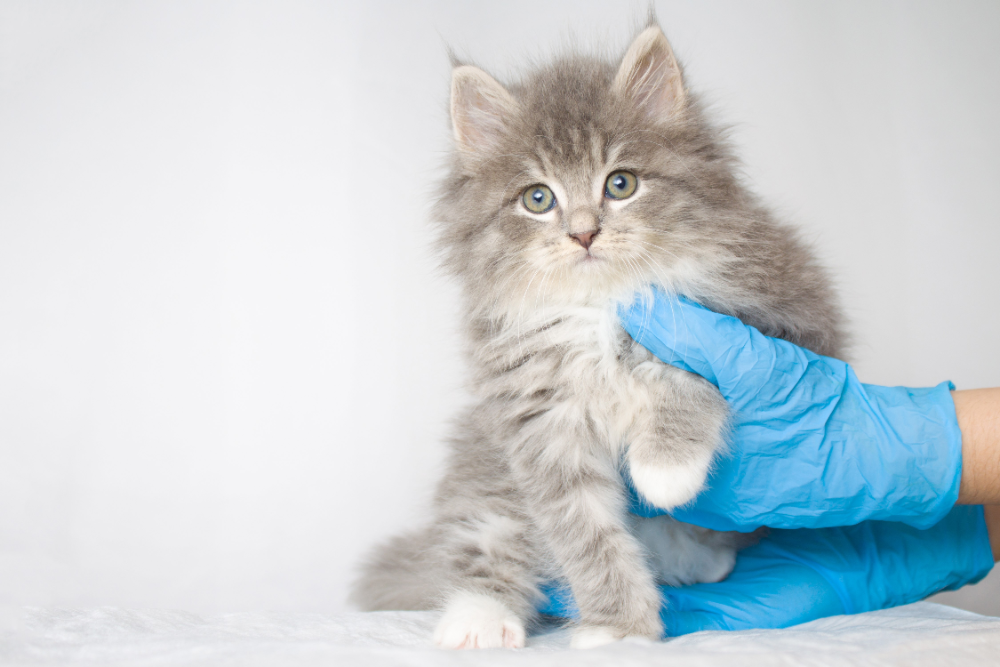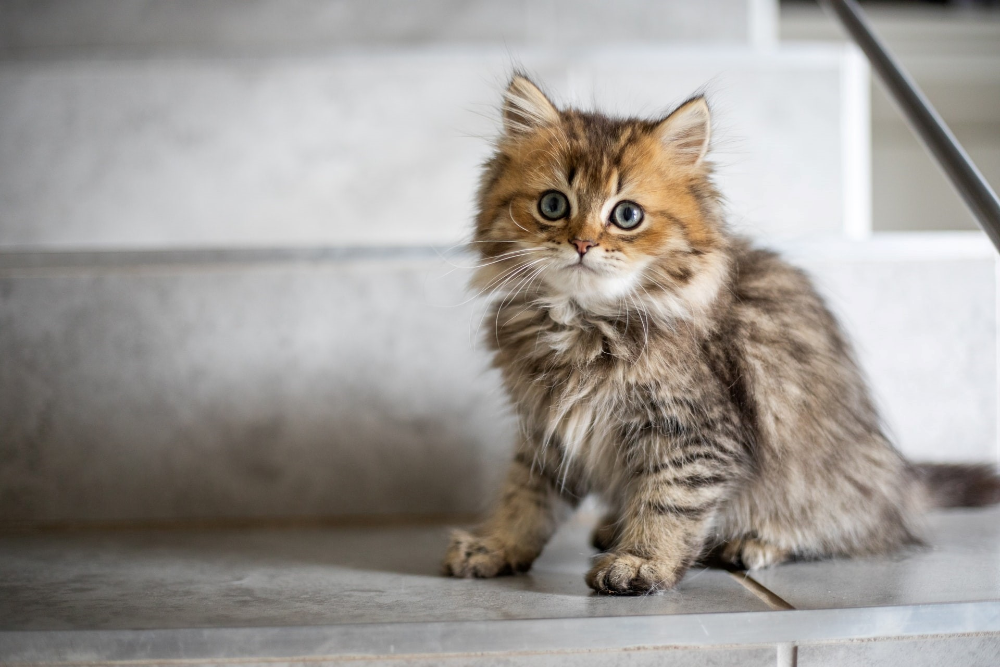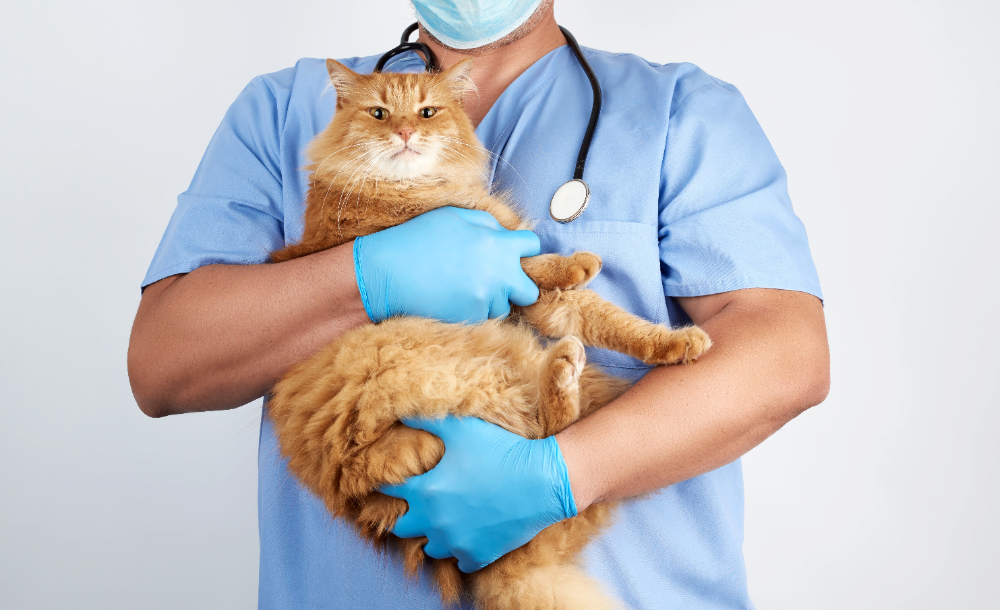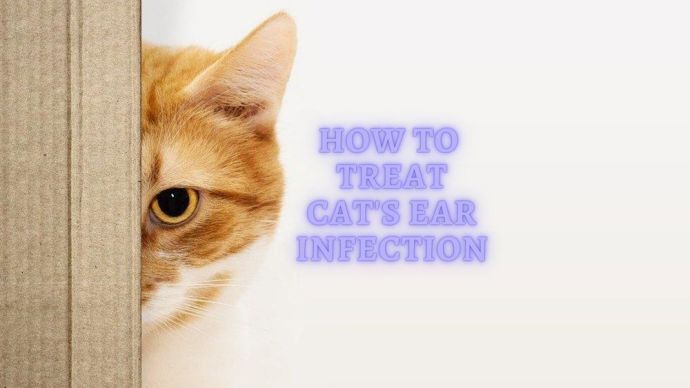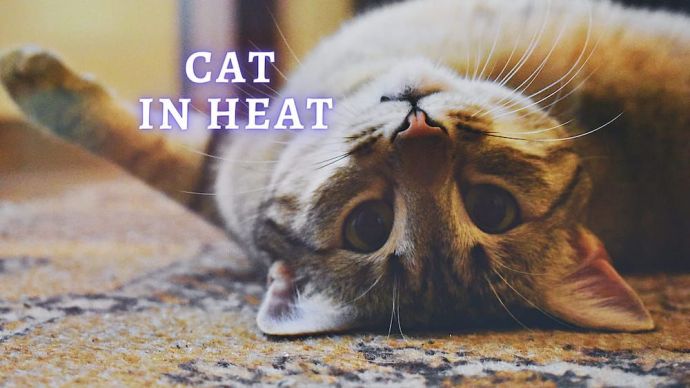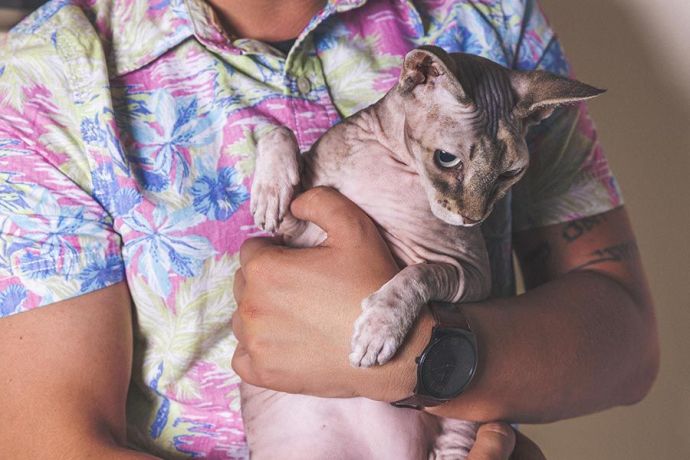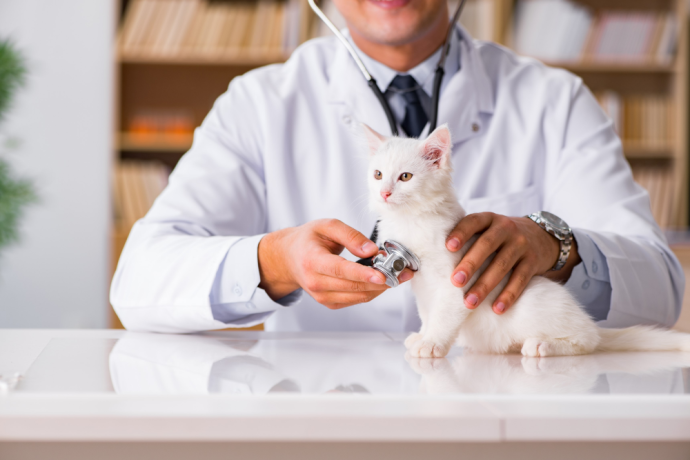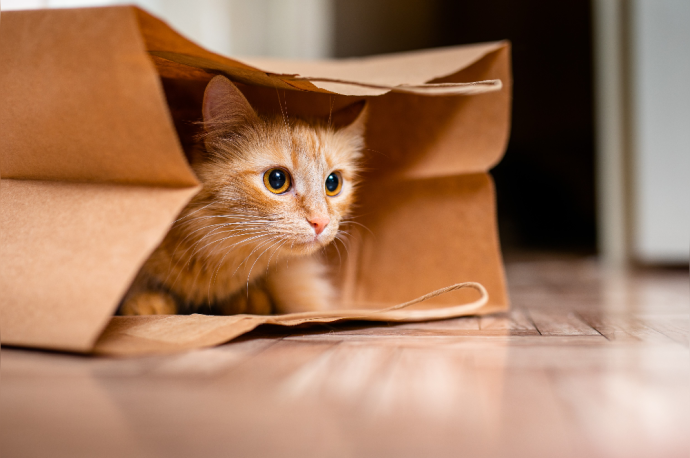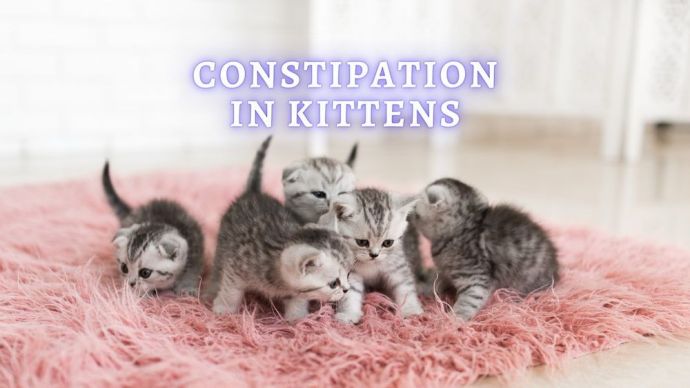Dehydration in Cats: Causes, Signs, Symptoms, and Treatment
Written by:
Author: Dr. Chyrle Bonk
Dr. Chyrle Bonk is an associate veterinarian since 2010 and was a volunteer for Clearwater County Youth 4H. Dr. Bonk contributed to various animal and veterinary related websites and magazines as a way to help keep animals across the globe safe and healthy. When Chyrle not working she spends her time with her own furry crew of dogs, cats, and horses.
View all 10 articlesLearn about our editorial process and veterinary review board.
Viewed: 411
Updated on: 01/24/2022
While your kitty may hate water externally, internally, they’re made up mostly of water-about 80%, in fact. Water is needed for proper digestion and waste removal, circulation, temperature regulation, and virtually all physiological processes. So, your cat must drink lots of fluids, or else a severe condition called dehydration can occur.
What is Dehydration?
Dehydration refers to the loss of fluid and electrolytes from the body, creating an imbalance that affects nearly all of your cat’s systems. Not only is the fluid important to your cat’s body, electrolytes, like sodium, potassium, and chloride, are essential for normal body functions.
What Causes Dehydration in Cats?
Cats rarely are just dehydrated. Instead, it is most commonly a symptom that something bigger is going on. Dehydration can occur for many reasons ranging from not drinking enough to fluid loss somewhere in the body. Let’s look at those reasons in more detail.
Not drinking enough: cats are strict carnivores. In the wild, their diet consists almost entirely of the prey that they catch. This prey not only provides a lot of protein, but it also provides plenty of moisture, almost enough to satisfy their fluid needs. Because of this, cats have a shallow thirst drive. You typically don’t see them sloppily gorging themselves at the water bowl on a hot summer day like you would a dog, and not just because they don’t want to get messy. Since they don’t have this huge drive to seek out and drink water, our domestic kitties that are fed dry kibble may not drink enough water to meet their needs and can easily become dehydrated.
Indoor kitties may not have fresh water available to them, or they may become locked away from their water source. They may also not like the water that they’re provided. Some kitties can be sensitive to smells, like chlorine, and even turn down water that appears fresh and clean. Outdoor kitties may have trouble finding water if they’re lost or unfamiliar with their surroundings, or only come across the ice in the wintertime.
Kittens may dehydrate quickly if they’re not getting enough milk. Often in large litters or with runts, these little guys just don’t get enough time to nurse and dehydration can be a complication.
Finally, cats that are sick may have even less of an urge to drink due to nausea or lethargy and can quickly become dehydrated.
- Overheating: Cats weren’t blessed with sweat glands and have to rely on panting as a cooling mechanism. Panting is a massive cause of water loss, so cats may become more easily dehydrated during hot weather or after marathon sessions of laser chasing.
- Fevers can also bring about dehydration, either through trying to cool themselves like above or through just the general feeling of malaise that leads them to not want to drink.
- Vomiting and diarrhea: What goes in must come out, but when what’s coming out contains more water than what goes in, your kitty will get dehydrated. Vomiting and diarrhea are very watery substances, making messes to clean up and dehydration major consequences.
- Blood loss: Obviously, blood-gushing wounds lose a substantial amount of fluid that could lead to dehydration, but minor blood loss over longer periods, like from a massive flea infestation, can do the same as well.
- Other illnesses: Kidney disease, diabetes, hyperthyroidism, to name a few, can all lead to dehydration due to fluid loss in other areas. In kidney disease, for example, the kidneys aren’t functioning properly and they let most of the water a cat drinks go right through into urine production instead of going back into the body where it is needed.
What Are the Symptoms of Dehydration?
If your feline friend is dehydrated, don’t expect them to show up holding out a cup for water. Rather, they may try to hide it instead. It’s up to you to sleuth out the signs. Knowing what your kitty is like before becoming dehydrated will go a long way in noticing the first subtle signs of a problem. One of the first things many pet parents may notice is less urine in the litter box-instead of several large clumps per day, it may be down to a smaller size or fewer clumps. This may also be coupled with small, hard stools or constipation. On the other hand, a cat may be dehydrated and still produce lots of urine, such as the case with kidney disease.
READ MORE: My Cat Lost his Voice
Dehydrated cats may also develop sunken and dull eyes and their saliva may become thick and almost ropey in appearance. Normal cat saliva should be thin and watery. Their gums will change from pink and moist to dry or sticky and their skin will ‘tent’ instead of being elastic.
Dehydrated cats may also be lethargy and not interested in food. They may also have other symptoms related to the reason they’re dehydrated in the first place, such as vomiting, diarrhea, or a fever.
For little kittens, their tiny gums and eyes may be hard to judge, so skin tenting is probably your best bet. Also, lethargy or lack of drive to nurse can be an indication of dehydration as well.
READ MORE: Cat Water Fountains Reviews
How is Dehydration in Cats Treated?
Put simply, treating dehydration is done by replacing fluids, including electrolytes. Sounds easy, right? However, treating dehydration can be anything but simple. It may be that your cat isn’t willing to drink or can’t keep fluids down once they drink them, or that they can’t drink fast enough to make a difference. Most often, anything over a mild case of dehydration will need to be treated by a veterinarian.
READ MORE: Cat Drinking a Lot of Water
Mild cases of dehydration in cats can be treated at home by encouraging your cat to drink. If dehydration is due to overheating or overexertion, give your kitty a cool, calm place to lay and offer then fresh, clean water to drink. If your cat isn’t into plain water, try to spruce it up with some Gatorade or Pedialyte to add a little flavor and also some much-needed electrolytes. You can also try a little low sodium chicken broth. Another option is to make a watery slurry out of some canned cat food by mixing in water until a tomato-soup consistency is achieved.
If your cat is vomiting or has diarrhea, you can still try to rehydrate by offering water, but be careful not to give small amounts frequently, so you don’t further upset the stomach. If the vomiting or diarrhea is severe, you should see your veterinarian.
Veterinarians will treat dehydration in your cat by giving fluids, but they will do so either subcutaneously, under the skin, or intravenously. Electrolytes and possibly vitamins will be part of the mix to maintain a proper electrolyte/fluid balance. The route that the fluids are given will depend on the dehydration’s severity and how willing your cat is to take part in it.
Once your kitty is thoroughly wet again, your vet will then try to determine the cause of the dehydration and treat it accordingly. Some long-term conditions, like kidney disease, may require repeat fluid administration as the disease progresses. For illnesses that cause vomiting and diarrhea, usually reversing the dehydration and decreasing the fluid loss will keep problems from repeating.
Dehydration can happen very quickly for the little ones, so it’s essential to make sure all kittens get a seat at the table. If your cat has a large litter or a few that just aren’t as aggressive as the rest and are getting pushed aside, you may have to intervene. You can supplement or completely take over the feeding for them by providing kitten formula through a bottle or syringe. You can also provide an electrolyte solution in the same way. If your kitten is more severely dehydrated, see your vet get a fluid replacement through an alternate path.
READ MORE: Best Cat Flea Treatment
How to Prevent Dehydration in Cats?
Knowing your feline friend and their habits is the best way to prevent dehydration. Cats should have a constant supply of fresh water available to them. This should be water that they will drink, which may mean non-chlorinated. Cats that eat dry kibble only will need to drink more water than those that get any canned food. Keep a close observation of your cat to know that they are drinking and urinating normally.
If your cat is picky, try freshwater fountains, different bowls, or even bottled water until you can coax them onto tap water. When traveling with your feline companion, you may want to bring some of their regular water from home so that they don’t go on a drinking strike during your trip.
For kitties with a bit of digestive upset, you can help by increasing their fluid intake with canned food or canned food slurries until they’re back to normal. For kitties with fevers or unwillingness to drink, try to entice them by other methods such as low sodium chicken broth or even ice cubes for the playful mind. Have your vet look at them immediately if you suspect dehydration that isn’t resolving with at-home methods or that’s getting worse.
READ MORE: Can you get Toxoplasmosis from petting a Cat
FAQ
How Can You Tell if Your Cat is Dehydrated?
The most effective (and dangerous!) way to tell that your cat is dehydrated is to touch their gums. Some kitties, especially those feeling under the weather, might not take kindly to your finger in their mouth, so please be careful! Lift their lip and touch their gums with your fingertips. Normal cat gums should be pink and slimy; a dehydrated cat’s gums may feel sticky or even dry.
You can also try a skin tent where you pinch the skin of their neck between your thumb and fingers. Normal cat skin will spring right back into place, while a dehydrated cat’s skin may remain tented and then slowly return to normal.
Why is Dehydration in Cats a Big Deal?
Water is essential to all living creatures, cats included. While they may be programmed to live on less water than other animals, they’re not immune to dehydration. Not having enough water can lead to organ failure and death within a short time, anywhere from three days to a week, depending on other health issues. Even if a cat doesn’t succumb to dehydration if severe enough it can lead to permanent organ damage.
Conclusion
Dehydration in cats is nothing to shake a whisker at. It can be a severe complication of another very serious issue that can lead to death or permanent damage in a concise time if left untreated. Knowing your kitty and their normal drinking habits will help clue you to dehydration early on so that it is more easily treated or prevented. Don’t let your cat’s natural outward fear of water turn to an inward fear. Water is an essential part of their diet, so encourage drinking and see your veterinarian if you suspect your kitty is dehydrated.
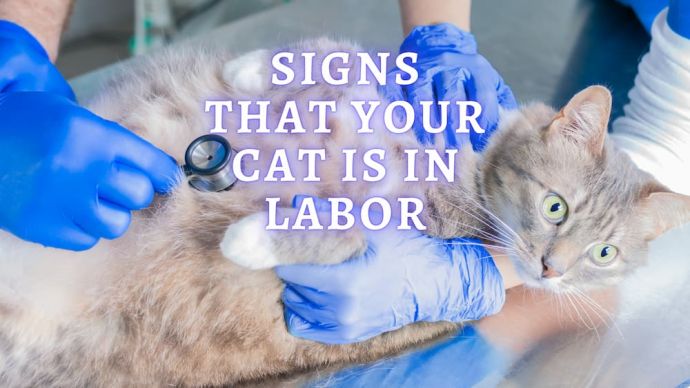 Cat Veterinary Tips Signs That Your Cat is in Labor: How to tell if a Cat is Pregnant?
Cat Veterinary Tips Signs That Your Cat is in Labor: How to tell if a Cat is Pregnant? - 15122
- 1
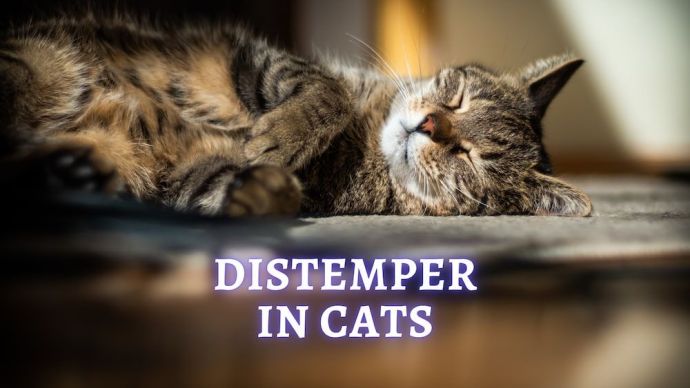 Cat Veterinary Tips Distemper in Cats: What is Feline Panleukopenia? Causes, Signs, Diagnosis and Treatment
Cat Veterinary Tips Distemper in Cats: What is Feline Panleukopenia? Causes, Signs, Diagnosis and Treatment - 299
- 0
 Cat Care Why Does My Cat Attack My Legs? 10 Reasons Why and What To Do About It (Vet-Approved Advice)
Cat Care Why Does My Cat Attack My Legs? 10 Reasons Why and What To Do About It (Vet-Approved Advice) - 46013
- 21
 Cat Veterinary Tips Cat Stomach Gurgling: Vet Advice on Why is Your Cat Stomach Gurgling?
Cat Veterinary Tips Cat Stomach Gurgling: Vet Advice on Why is Your Cat Stomach Gurgling? - 36469
- 4
 Cat Veterinary Tips My Cat Lost its Voice: Can Cats get Laryngitis? (Vet Advice)
Cat Veterinary Tips My Cat Lost its Voice: Can Cats get Laryngitis? (Vet Advice) - 23554
- 13









